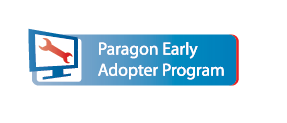
The increasing popularity of the latest high-capacity drives, along with the growing number of solid state drives (SSDs) for home and small business users make system migration concerns relevant and important. This article describes some issues and their best solutions and is intended to help users perform system migrations using simple, fast methods.
Resizing up Partitions
The majority of system migrations are performed when computer hardware is upgraded or replaced, with most users opting for the now affordable high-capacity drives. Though you can preserve the current size of your partitions during a migration to a larger HDD, it makes sense to enlarge some of them proportionally.
To migrate up – you could copy all partitions one by one and then change their size manually, or you can perform complete migrations in one step. Paragon’s Hard Disk Manager or Drive Copy includes tools that automatically change partition size according to optimal parameters during the migration.
Resizing Down Partitions
SSDs have become more and more popular with netbook and notebook users, partly due to some important advantages when compared to traditional hard disk drives: better access time and reading speed parameters, immunity to physical shock, and smaller dimensions. However SSD’s are still expensive, especially models with high capacity. This factor plays significant role for a new owner, as they may be forced to purchase a SSD with a smaller capacity than the previous HDD had. As SSDs are perfect for storing system and applications, and because laptops can contain only one internal storage device, the option of resizing a system partition down is quite useful.
For example, your notebook has a 250 GB hard drive with two 120 GB partitions, and you want to add a SSD. You purchase a 50 GB SSD and want to transfer the important system and core applications to that drive, and store unnecessary data on removable media.
The action plan is the following:
- Migrate the entire software environment by copying all partitions to the SSD, or transfer the single system volume with Paragon Hard Disk Manager or Drive Copy.
- Copy unnecessary data to an external disk drive or flash media
Migration to 3TB HDD
The introduction of affordable 3TB hard disk drives have made them a popular option for system upgrades. However, using high-capacity drives as system drives have one major drawback: traditional MBR partitioning schemes do not work with HDD bigger than 2TB. It is not possible to add a record volume beyond the 2TB limit. The answer is to use a GPT partitioning scheme, which does not have this limitation.
This issue does not affect system migrations to 3TB HDD if Windows was originally installed on the GPT volume. But if the OS was installed on a traditional MBR volume, after the migration to a 3TB HDD, existing tools yield an unbootable OS, and/or inaccessible disk space beyond the 2TB limit.
Paragon Software has developed a workaround method for MBR OS migration to 3TB drives. A special driver addresses the remaining disk space beyond the 2TB limit and preserves the boot ability of the OS, even if it was previously installed on a MBR volume.
Data Exclusion during Migration
You may want to exclude specific data during migration, for example – old documents, temporary files, or media files. You can copy a partition with help of any ordinary cloning tool and then search for this data and delete it. Or, you can delete redundant data first and then copy the partition.
The main drawback of these methods is the tedious manual work. Paragon Hard Disk Manager or Drive Copy can automatically exclude these files and folders during migration. You can set filters and the program will perform these tasks without your assistance. You can also transfer the system to a drive with less capacity than the original volume due to the exclusion of redundant data.
Volume Alignment
The introduction of the latest HDDs and SSDs has created a new problem with volume alignment caused by changes in sector size. By changing the sector size from 512 bytes to 4 kilobytes, some traditional methods of disk partitioning have become obsolete and actually harmful.
Unaligned partitions cause overall performance decline on new HDDs/SSDs. The lifespan of SSDs can be significantly reduced as a result of many redundant read/write operations caused by unaligned partitions.
Using proper migration tools to copy volumes eliminates these problems. Paragon’s Migrate OS to SSD component (request the beta version) is alignment aware software that automatically places partitions according to defined 4K sectors, leaving system performance and SSD reliability unaffected.
Preserving Special Volumes
Microsoft Reserved Partition (MRP) is a special volume which Windows 7 may create during installation. It contains important data for the system boot and recovery and should be always present on the hard disk drive with the operating system it was created with.
Paragon Migrate OS to SSD component treats this volume properly and places it intact on a target HDD/SSD so that neither important data nor system boot ability is affected.
You cannot copy volumes with a running operating system or application, or with opened files. There are two options for this scenario: stop the OS, all applications, restart the computer and copy all data to bootable media and a special environment. Or, use a tool which can copy volumes from a running OS with help of special drivers and technology.
Paragon’s Migrate OS to SSD component uses hot copy technology to instantly copy any volume regardless if any open files/applications are running. You can perform system migrations without restarting your system and use this tool to backup data.


